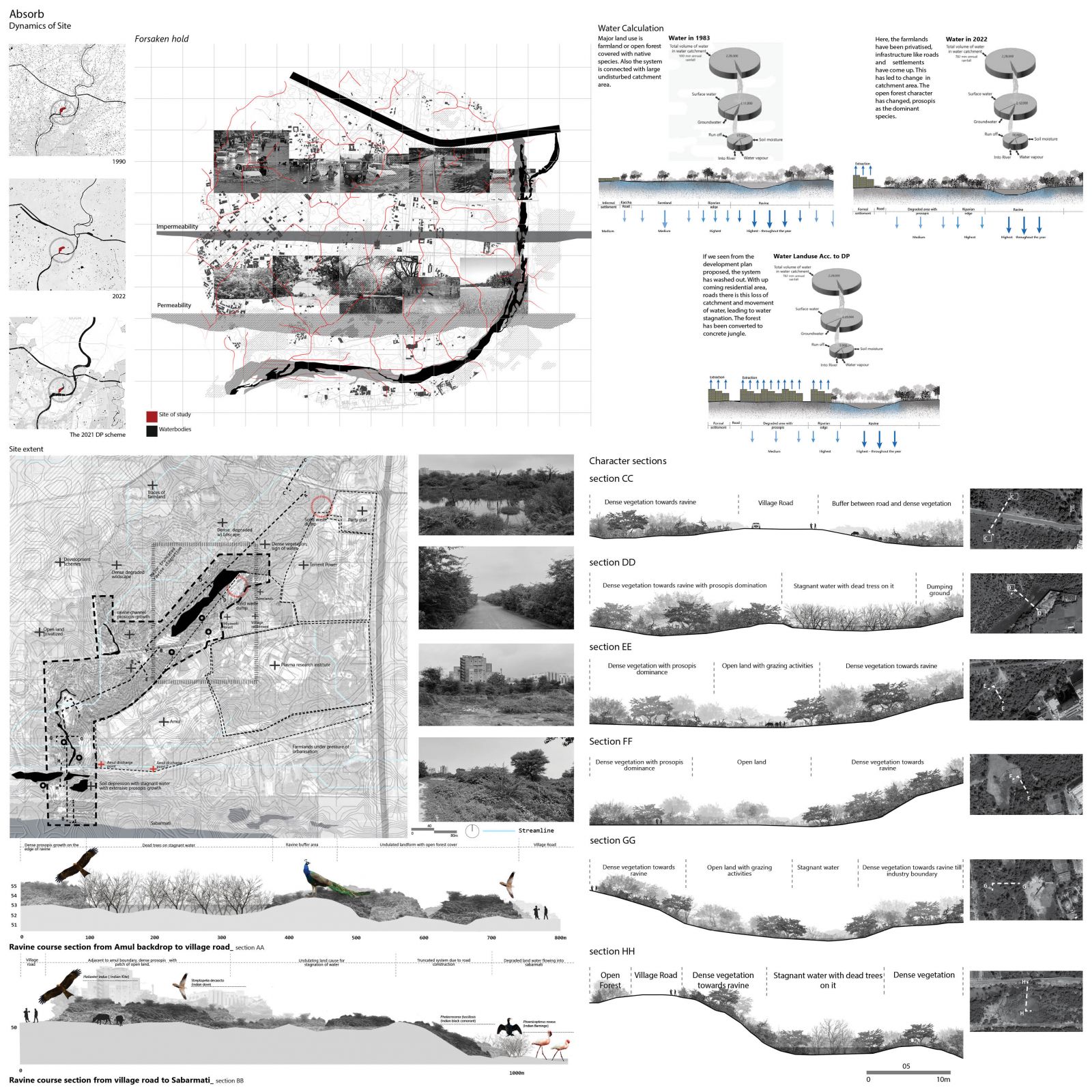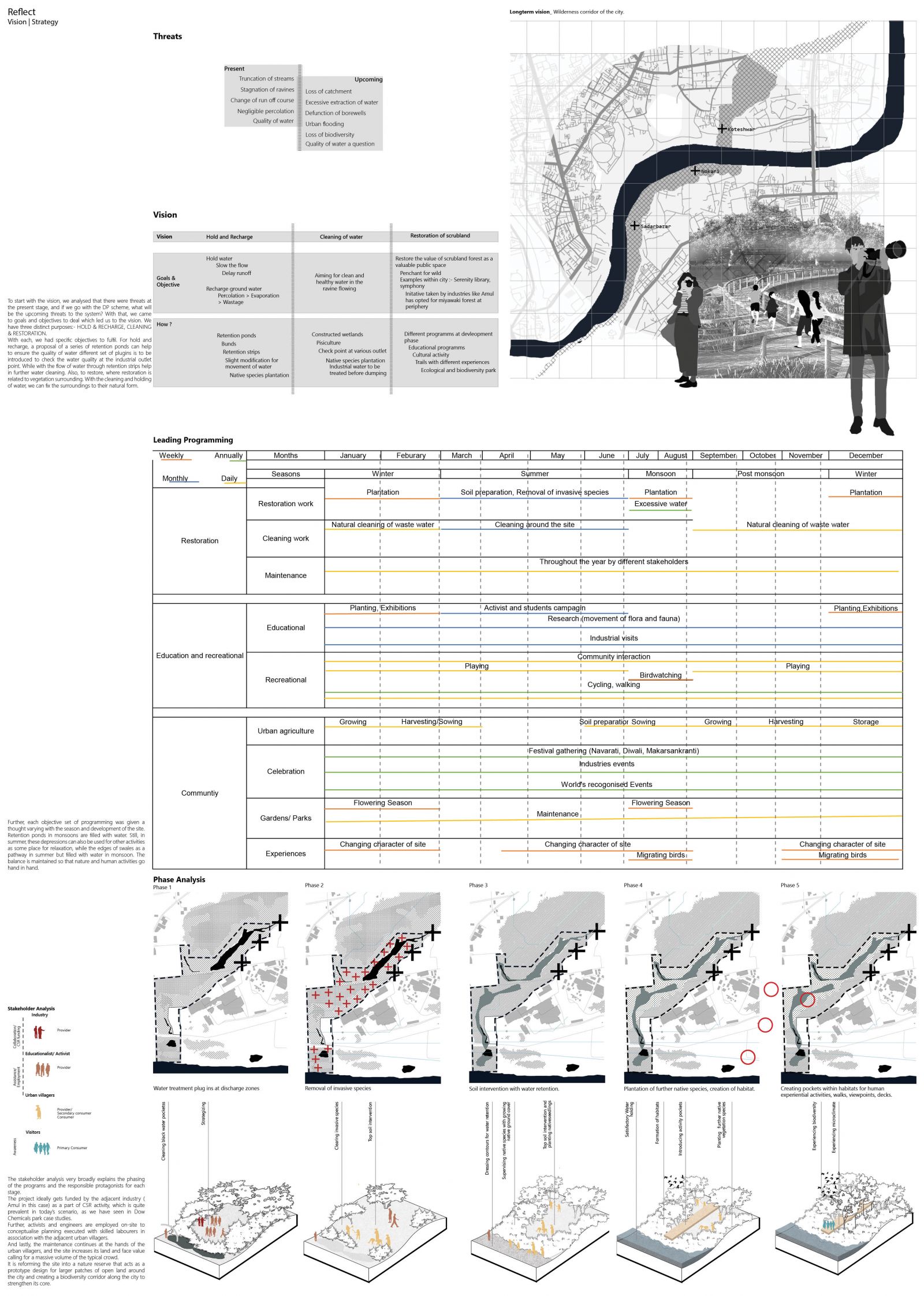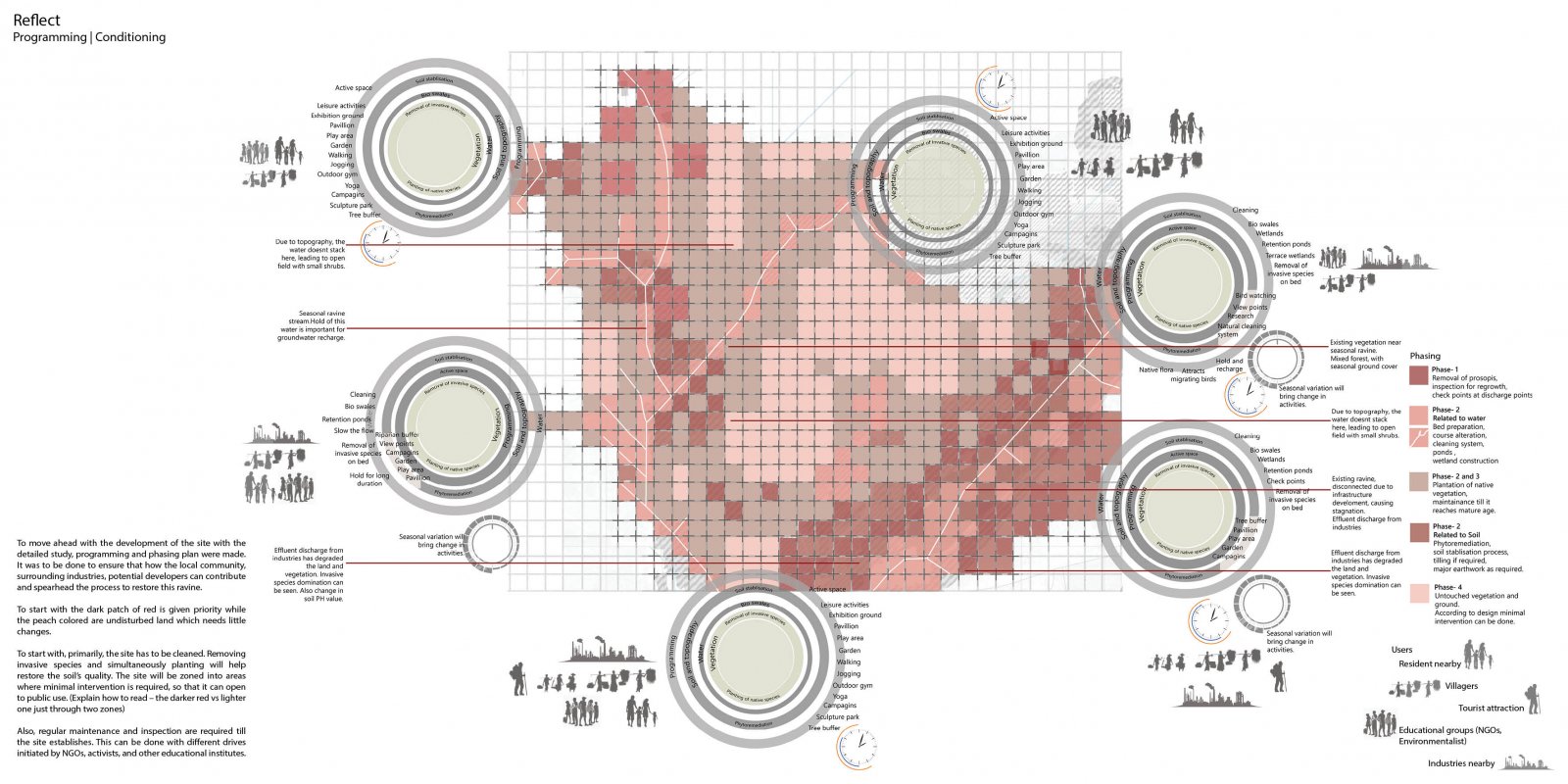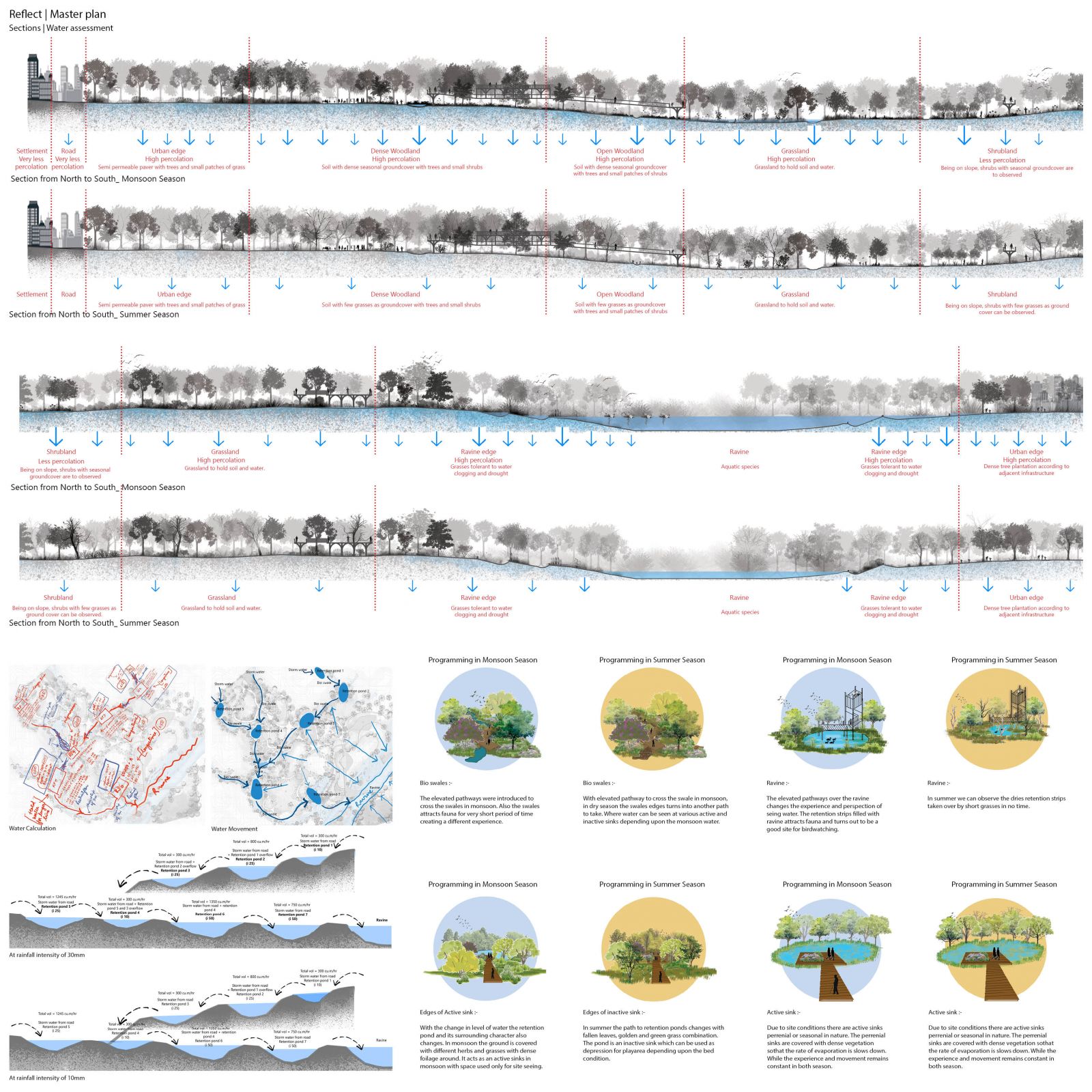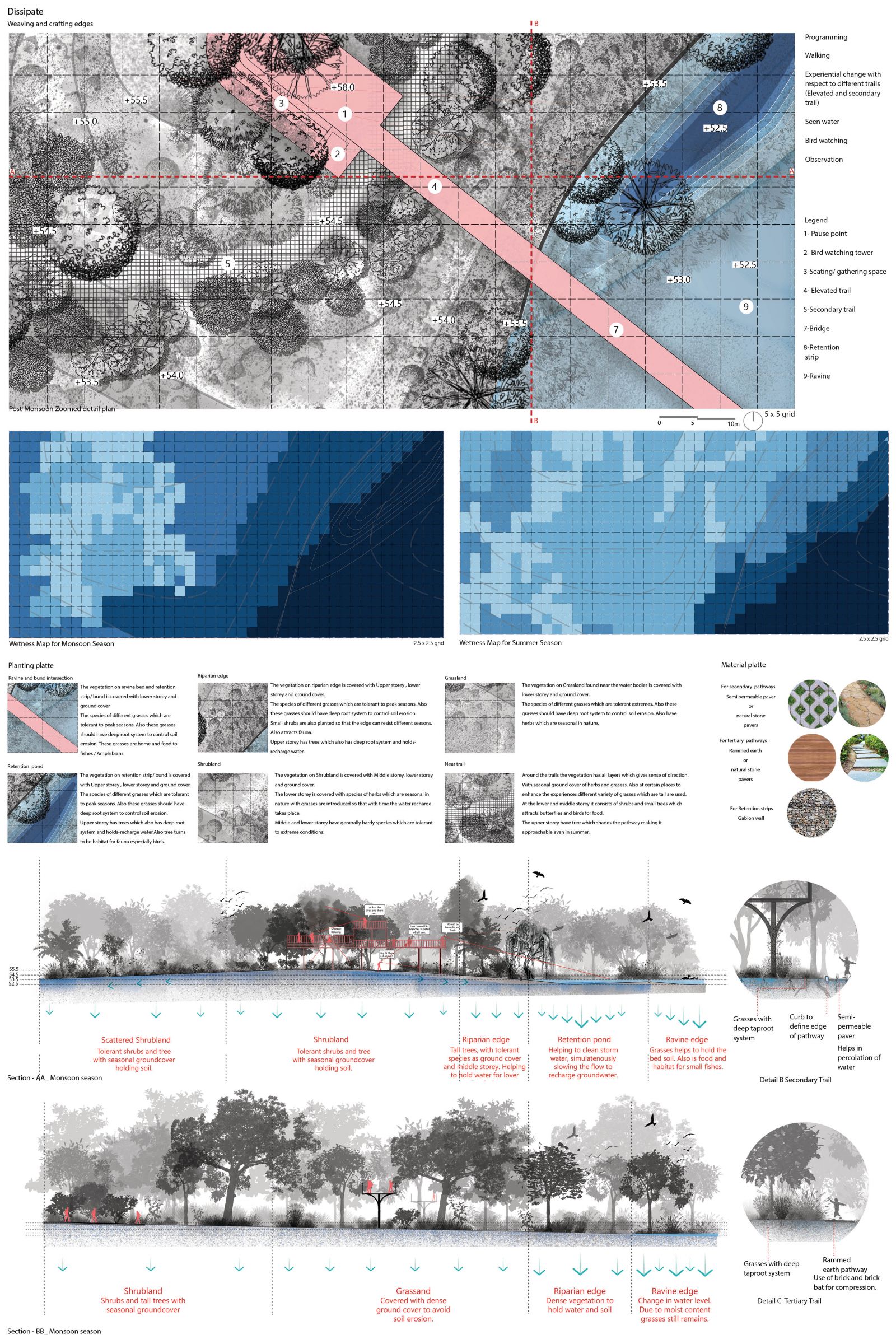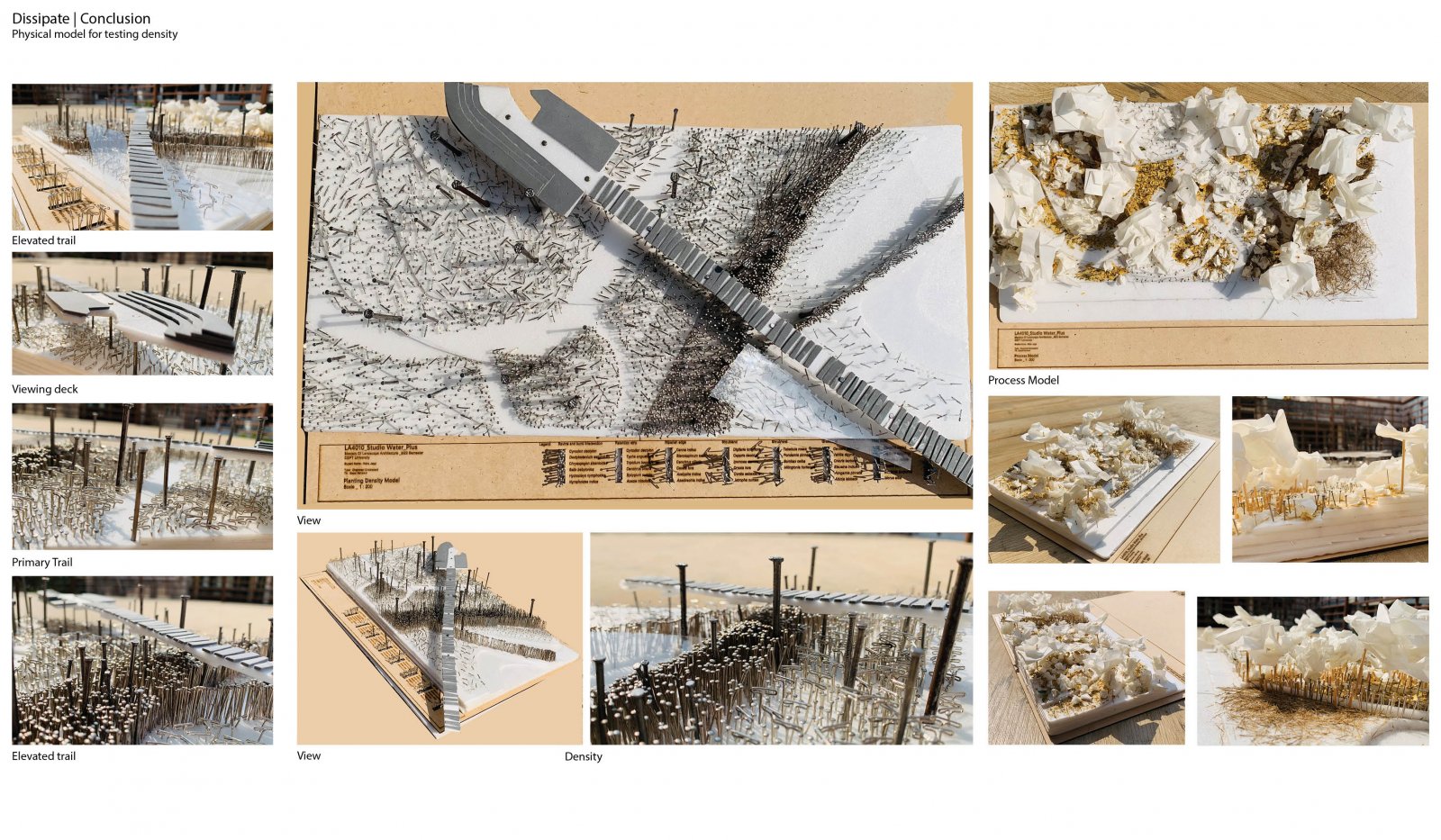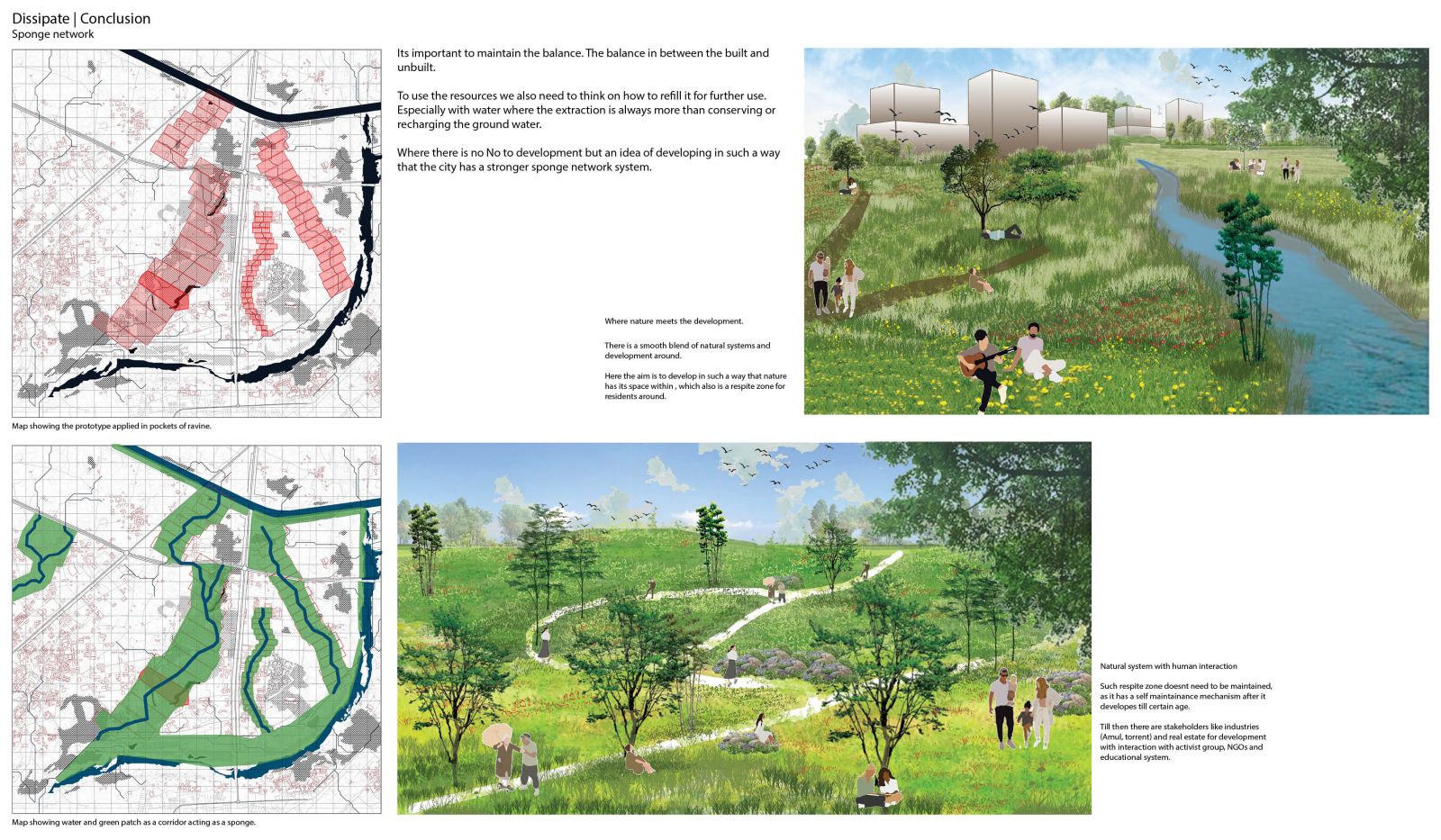Your browser is out-of-date!
For a richer surfing experience on our website, please update your browser. Update my browser now!
For a richer surfing experience on our website, please update your browser. Update my browser now!
While we are trying to connect ourselves, anthropocentric approaches tend to ignore and destroy the natural system rather than work with the flow. This connect to disconnect doesn’t seem to fit with the future scenario. The site has a vast potential to link nature with human activities. Water is essential for living; we must start conserving and managing water. Looking further, the water crisis will be a challenge, and we need to take measures to avoid it. Demonstrating a transect, the project showcases how a water-positive future could emerge through a designed typology where development can continue to happen alongside the revival of these recharge sites. The site already has a system of water and be further enhanced with a series of retention ponds and strips to hold water. The flow of water will be slow so that groundwater gets recharged. Further, the presence of water helps to revive the lost biodiversity. Also, with the recent rise in the penchant for wilderness in cities, these sites will cater to future needs of connecting nature and humans.
View Additional Work